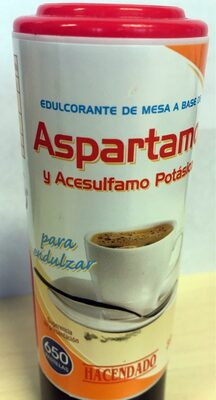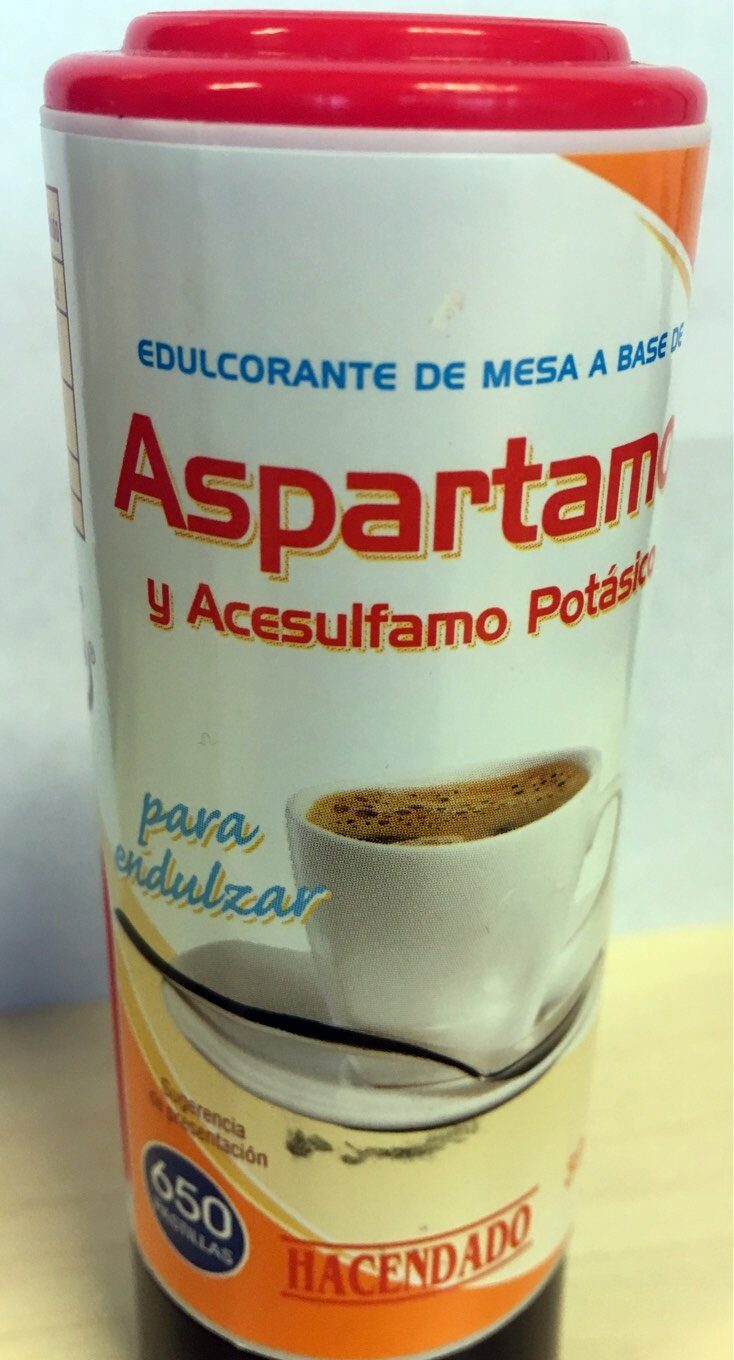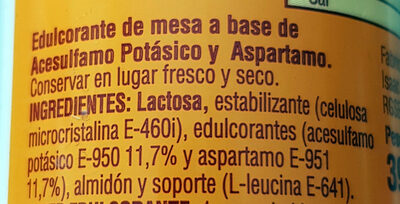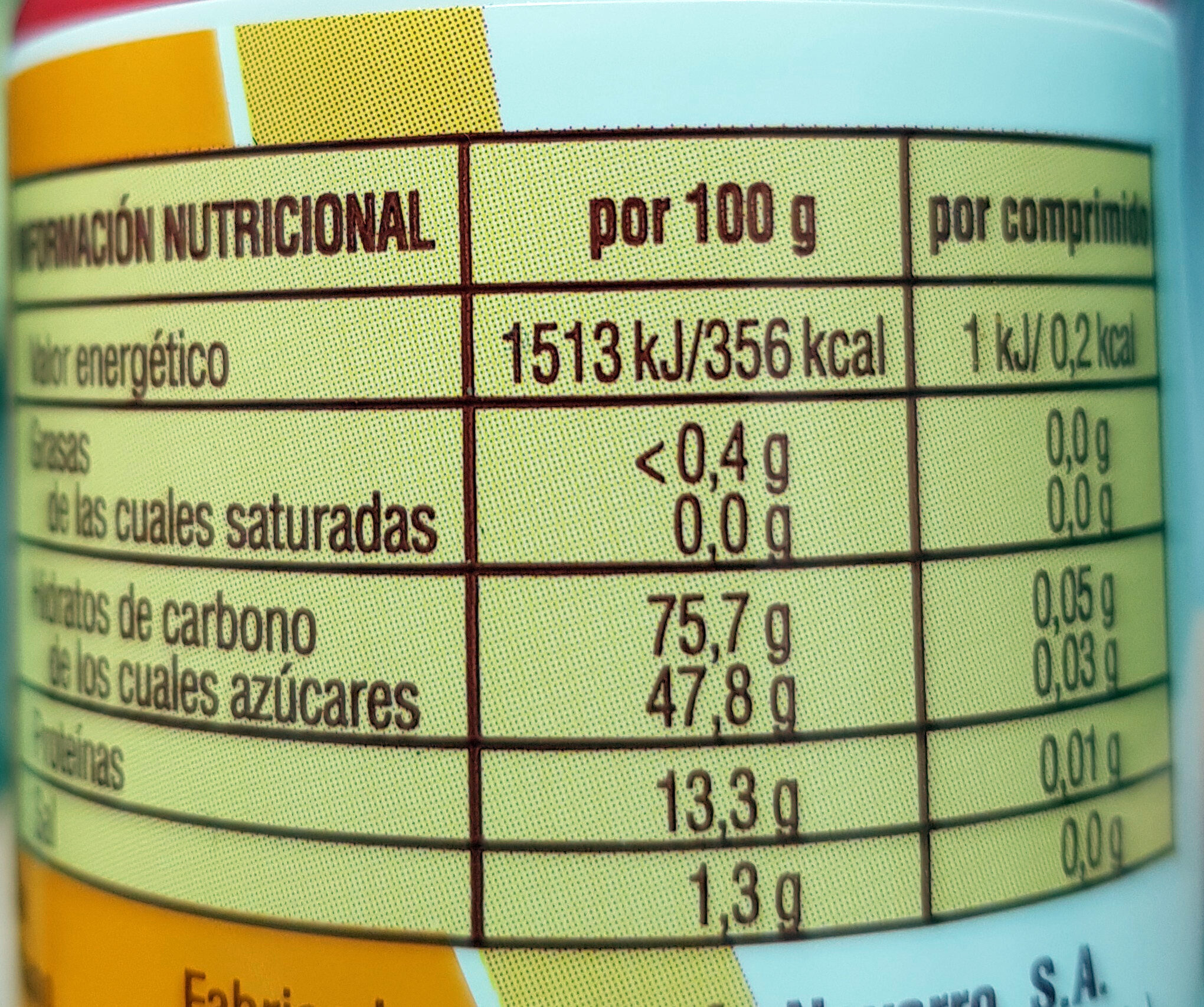Edulcorante de aspartamo y acesulfamo potásico - Hacendado - 39 g
This product page is not complete. You can help to complete it by editing it and adding more data from the photos we have, or by taking more photos using the app for Android or iPhone/iPad. Thank you!
×
Barcode: 8480000198181 (EAN / EAN-13)
Common name: Edulcorante de mesa a base de acesulfamo potásico y aspartamo
Quantity: 39 g
Packaging: es:Green dot
Brands: Hacendado
Categories: Sweeteners, Food additives, Sugar substitutes, Artificial sugar substitutes, Aspartame, Aspartame sweetener in tablets
Labels, certifications, awards:
Contains a source of phenylalanine, Green Dot
Manufacturing or processing places: Alicante, España
Traceability code: 31.00099/A
Stores: Mercadona
Matching with your preferences
Environment
Packaging
Transportation
Report a problem
Data sources
Product added on by openfoodfacts-contributors
Last edit of product page on by alia.
Product page also edited by alexrios, beniben, kiliweb, saisa, teolemon, yuka.UVl3bkU0SS85dGt1d2NjRndSK05xL04yeHA2UWZHaVJOY1pPSUE9PQ.








